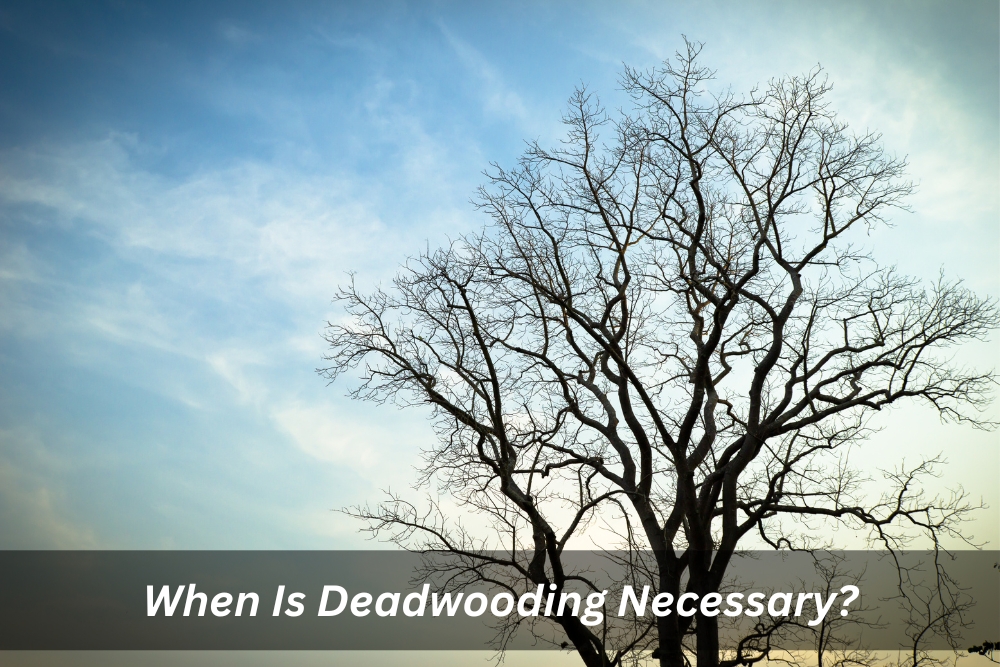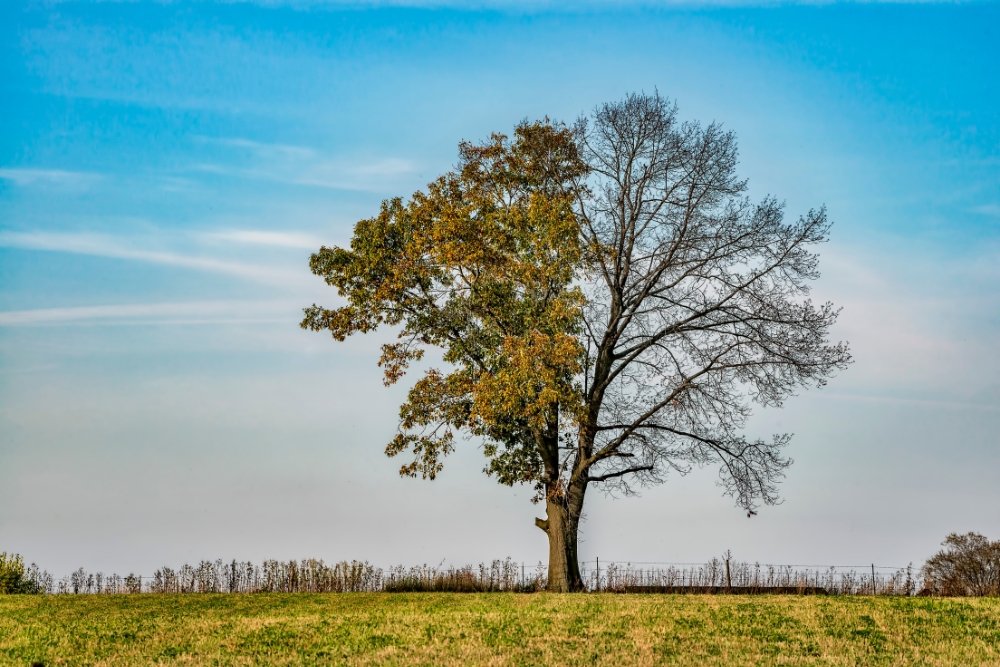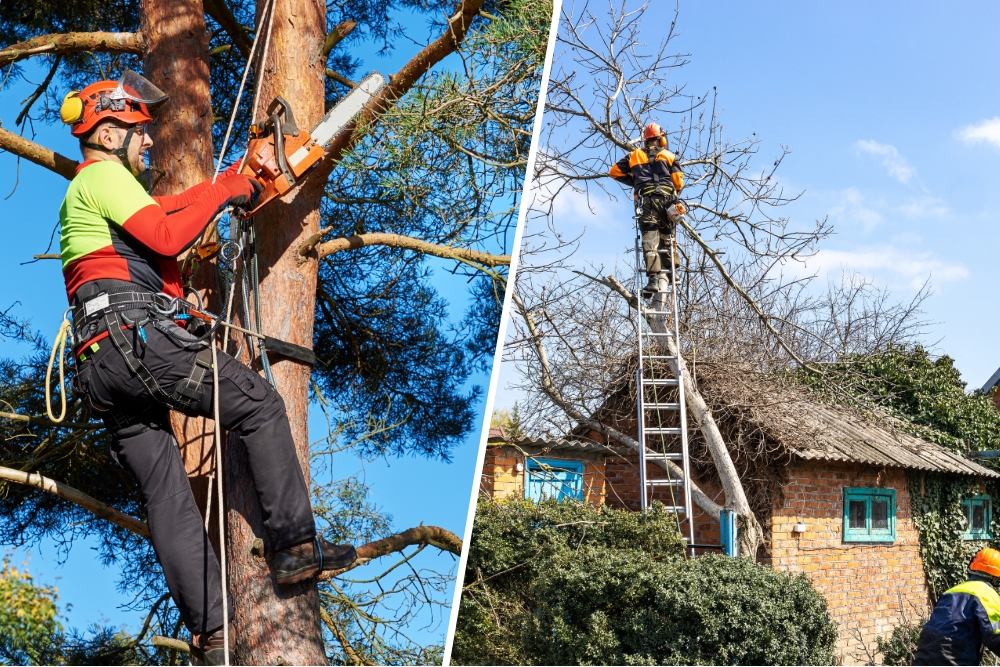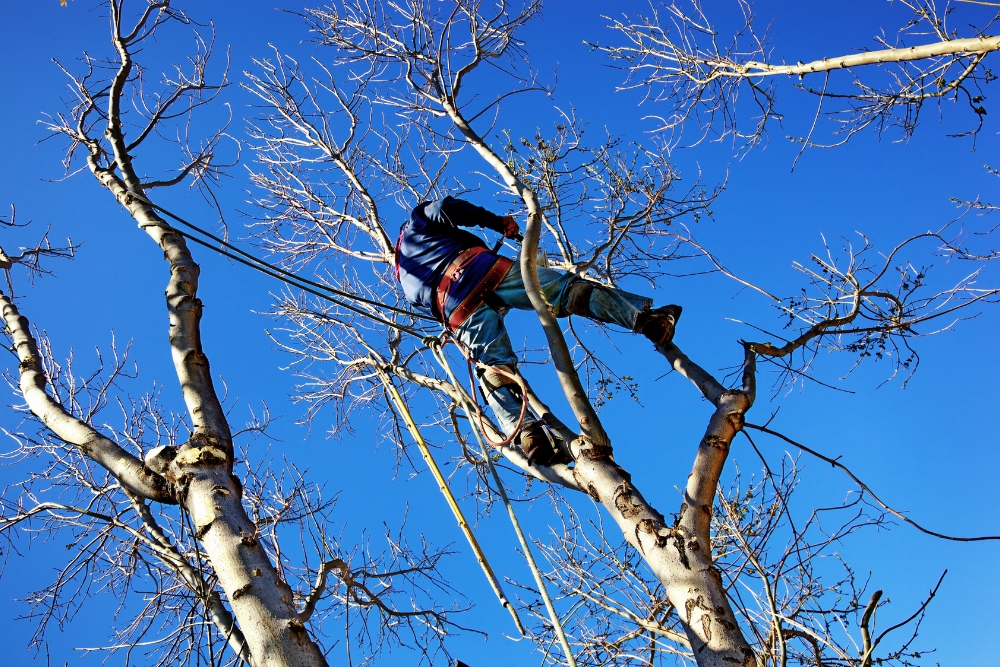
Trees: grace our landscapes, provide shade on scorching days, and whisper secrets on breezy nights. But even the most magnificent trees need a helping hand sometimes. Enter deadwooding, a process that removes lifeless branches, keeping your leafy giants healthy and safe.
What exactly is deadwooding?
Think of deadwood as the skeletal remains of once-vibrant branches. These lifeless limbs lack leaves, crackle like brittle bones, and offer no benefit to the tree. Deadwooding involves surgically removing these unwanted elements, promoting health and preventing hazards.
Why should you be concerned about deadwood?
Ignoring deadwood is like turning a blind eye to potential dangers and setbacks for your beloved tree. Here’s why:

- Safety First: Imagine a heavy branch crashing down during a storm, damaging property or worse, injuring someone. Furthermore, deadwood is more susceptible to snapping, posing a real safety threat.
- Tree Health: Dead branches hinder a tree’s ability to absorb vital nutrients and light. Removing them encourages new growth, strengthens the immune system, and combats disease.
- Aesthetics: Let’s face it, bare branches detract from a tree’s natural beauty. Deadwooding creates a cleaner, more aesthetically pleasing silhouette, enhancing your landscape’s visual appeal.
- Structural Integrity: Deadwood weakens a tree’s structure, making it more vulnerable to wind and storm damage. By removing it, you’re reinforcing the tree’s natural defences and extending its lifespan.
But isn’t deadwood natural?
Deadwood plays a role in nature’s cycle, providing habitat for wildlife and enriching the soil as it decomposes. However, in urban environments, uncontrolled deadwood poses unnecessary risks. Additionally, the natural decomposition process can be slow, leaving your tree vulnerable for extended periods.
So, when is deadwooding truly required?
Here are some telltale signs it’s time to call in the arborist:
- Visually obvious: Dead branches lack leaves, have brittle bark, and may appear cracked or broken.
- Structural concerns: Weak, drooping, or unbalanced branches signal potential risks.
- Signs of disease: Fungal decay, insect infestation, or discolouration indicate deeper problems.
- Proximity to structures: Deadwood near power lines, buildings, or walkways demands immediate attention.
- Regular maintenance: Scheduling professional inspections every few years helps identify and address deadwood proactively.
Are there benefits beyond safety to removing dead branches?
Absolutely! Besides the aforementioned safety and health advantages, deadwooding offers additional perks:

- Improved light penetration: Removing dead branches allows sunlight to reach lower branches, promoting healthy growth throughout the tree.
- Enhanced air circulation: Better airflow reduces the risk of disease and encourages new leaf growth.
- Increased property value: Well-maintained trees with proper deadwooding add beauty and value to your property.
- Root growth: While deadwooding primarily focuses on removing dead branches, it can indirectly stimulate root growth similar to pruning. Removing unnecessary branches allows the tree to redirect its energy towards developing a stronger root system, ultimately leading to a healthier and more resilient tree. You can read our blog “Does pruning trees encourage root growth?” to provide more details on this concept.
Who should perform deadwooding?
While the urge to tackle home improvement projects yourself is understandable, and venturing into deadwooding on your own can be risky, it is not one to add to your DIY list.
Safety first:
- Specialised techniques: Removing deadwood involves specific cutting techniques and safety protocols to minimise the risk of falling branches, injuries, and damage to the tree itself. Additionally, certified arborists are trained in these techniques and prioritise safety throughout the process.
- Proper equipment: Deadwooding often requires specialised equipment like climbing gear, chainsaws, and pruning tools designed for specific branch sizes and situations. Also, using the wrong equipment or lacking proper training in its safe operation can lead to serious accidents.
- Knowledge of tree structure: Accurately assessing the tree’s structure and identifying weak points is crucial for safe deadwooding. Furthermore, arborists possess the knowledge and experience to make these assessments and plan the removal accordingly.

Expertise beyond safety:
- Accurate diagnosis: Deadwood isn’t always what it seems. Sometimes, branches appear dead but are still viable. Moreover, they can accurately diagnose the health of each branch, ensuring only truly deadwood is removed, preserving the tree’s overall health.
- Precise cuts: Making the right cuts at the correct angles and locations is essential for promoting healthy healing and preventing further damage or disease. Additionally, professionals have the training and experience to make these precise cuts, minimising stress on the tree.
- Long-term tree health: Deadwooding isn’t just about removing dead branches; it’s about understanding the tree’s overall health and making cuts that promote future growth and stability. Also, arborists consider the tree’s species, age, and condition when making decisions, ensuring long-term benefits.
Beyond tools and expertise:
- Insurance and liability: Certified arborists carry insurance to protect themselves and their property in case of unforeseen accidents. Furthermore, this gives you peace of mind knowing you’re not liable for any potential damage.
- Experience with local regulations: Different regions have regulations regarding tree work and deadwood removal. In addition, arborists stay updated on these regulations and ensure all work complies, saving you the hassle of research and potential fines.
- Sustainable practices: Reputable arborists prioritise sustainable practices, promoting long-term tree health and minimising environmental impact. Moreover, they use proper disposal methods for removed branches and advocate for responsible tree care.
What to expect during deadwooding?
Here’s a glimpse into the deadwood removal process:

- Pre-assessment: The arborist carefully examines the tree, identifying dead branches and potential risks.
- Deadwood removal: Using appropriate techniques and equipment, they safely remove the identified branches.
- Wound treatment: Proper cuts and wound treatment promote healthy healing and prevent disease.
- Debris removal: The arborist cleans up all debris, leaving your property safe and tidy.
Beyond deadwood: Additional tree care considerations
Remember, deadwooding is just one facet of proper tree care. Consider these additional aspects:
- Seasonality: Different tree species have optimal seasons for deadwooding. Consult an arborist for specific recommendations.
- Local regulations: Some areas have regulations regarding tree care and deadwood removal. Do your research and secure necessary permits if applicable.
- Ongoing maintenance: Regular inspections and deadwood removal, alongside proper watering and fertilisation, contribute to a healthy and vibrant tree.
Final thoughts: Keeping your trees healthy and safe
Deadwooding isn’t about punishment; it’s about care and foresight. By proactively removing dead branches, you’re safeguarding your trees, your property, and yourself. Invest in the health and beauty of your arboreal companions – the benefits will resonate for years to come.
Does deadwood in your trees have you worried? Fear not, All Green Gardening is here to help! We understand the intricate connection between tree health and safety, and our certified arborists have the expertise and experience to handle it all. With meticulous assessments, safe deadwood removal tailored to each species, and a commitment to sustainable practices, we ensure your trees not only survive but thrive for generations to come. Let us transform your worries into vibrant, healthy, and safe trees! Contact us today!
